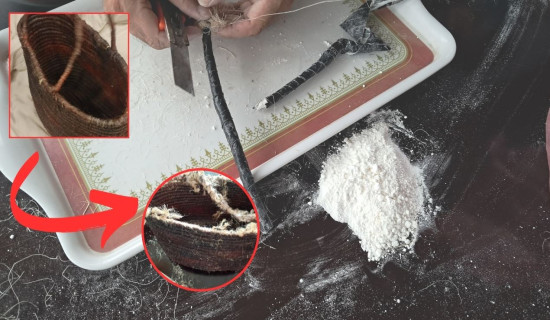- Saturday, 2 August 2025
Shelter For Quake Victims
Over 13,500 temporary houses have been built in Rukum West and Jajarkot, the worst affected districts by November 3 earthquake, with the grant given by the government to the victims. An additional 9,341 temporary houses are under construction in Rukum West, where the victims – who number 19,717 – have also received the first tranche of the assistance money (Rs. 25,000 each). There, a total of Rs. 592 million is said to have been transferred from the Local Disaster Fund so far for the construction, providing much-needed cash to construct 7,079 houses in Athbiskot Municipality, 3,014 of which have been completed while 4,100 are under construction.
In Chaurjahari Municipality, construction of 265 temporary houses has been completed while the construction of 2,400 is in progress. Similarly, 3,042 houses have been constructed in Sanibheri Rural Municipality while another 2,203 are being built. In Triveni Rural Municipality, 617 houses have been built and 550 are in the works. Similarly, 117 houses have been built in Banphikot Rural Municipality and 40 are under construction. The amount of first tranche for 23,608 beneficiaries from the District Disaster Fund has been sent to the disaster fund of respective local levels. The local levels have deposited Rs. 493 million in the accounts of 19,717 beneficiaries.
In Chaurjahari Municipality, Rs. 150 million has been sent from the District Disaster Fund for 6,279 beneficiaries, while the municipality has deposited 148.4 million in the accounts of 5,938 beneficiaries. What’s more, Rs. 175 million sent for 7,000 beneficiaries in Aathbiskot Municipality has been similarly deposited. Likewise, 10,096 beneficiaries in Jajarkot received Rs. 253.3 million grant to build temporary houses.
Of the 20,344 who signed an agreement to receive the grant, only 10,096 got the first tranche of the grant, out of which 6,598 have built the houses. The more houses get built, the more likely that they will be able to stay safe from the biting winter cold, as well as from the potentially dangerous weather conditions. With the thousands of houses already constructed and more in progress, it seems that the government has adequately mobilised its machineries and provided the capital to step up the reconstruction effort. It also seems that the shortage of skilled manpower to construct the houses – the problem faced in the early days – has been effectively sorted out.
Amid this encouraging progress, care must be taken to ensure that the affected – especially the elderly, the infirm, those with special needs, expectant mothers, newborns, among others – get the care they need. The people will surely get a roof over their heads. But will they be able to piece together their shattered lives? Some are living with deeply embedded trauma which may prevent them from living a happy life. They are in desperate need of psycho-social counselling, among other supports, to be able to lead a life that is in no way cumbersome to them as well as their families.
Besides, the chorus of complaints that many victims were not getting enough clothes to stay warm appears to have been muted. It means that this concern has also been addressed. Education had been another casualty. If students are still out of school, necessary measures must be taken to get them back to classrooms. And, when permanent structures are constructed, there must be a mechanism in place to ensure that they respect the seismic safety guidelines and building code for quake resilience.

















